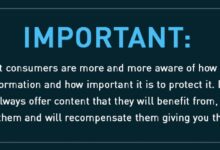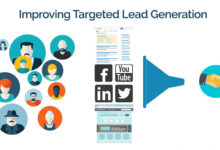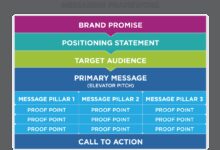Leads Meaning: 7 Powerful Insights You Must Know in 2024
Ever wondered what ‘leads meaning’ really is? It’s not just about names and emails—it’s the heartbeat of modern business growth. Let’s break it down in plain English.
Leads Meaning: The Core Definition and Why It Matters

At its most basic, the term leads meaning refers to individuals or organizations that have shown interest in your product or service. But it’s far more nuanced than that. A lead isn’t just a contact; it’s a potential relationship waiting to be nurtured. In sales and marketing, understanding the true leads meaning is the first step toward building a sustainable pipeline.
What Exactly Is a Lead?
A lead is any person or entity that has engaged with your brand in a way that indicates interest. This could be filling out a form, downloading a whitepaper, subscribing to a newsletter, or even just visiting a pricing page. The key is intent—some form of action that signals they might be open to further communication.
- A lead is not yet a customer, but a prospect in the early stages of the buyer’s journey.
- Leads can come from various channels: social media, search engines, referrals, or offline events.
- The quality of a lead depends on how closely they match your ideal customer profile.
“A lead is the first handshake in a potential business relationship.” — HubSpot
Why Understanding Leads Meaning Is Crucial for Growth
Without a clear grasp of what constitutes a lead, businesses risk wasting time and resources on unqualified prospects. Knowing the leads meaning helps teams prioritize efforts, allocate budgets wisely, and design better customer acquisition strategies. It’s the foundation of sales funnel optimization.
- Clear definition improves targeting accuracy in marketing campaigns.
- Aligns sales and marketing teams on common goals and KPIs.
- Enables better tracking of conversion rates from lead to customer.
For example, a B2B software company might define a qualified lead as someone who has requested a demo, while an e-commerce brand might consider a lead anyone who signs up for a discount code. The leads meaning varies by industry, business model, and sales cycle length.
Types of Leads: From Cold to Hot
Not all leads are created equal. One of the most important aspects of understanding leads meaning is recognizing the different types of leads and how they fit into the sales process. Categorizing leads helps businesses tailor their follow-up strategies and improve conversion rates.
Cold Leads: The Starting Point
Cold leads are individuals who have had minimal or no interaction with your brand. They may have been acquired through purchased lists, broad advertising, or general website traffic. While they represent potential, they often require significant nurturing before they’re ready to buy.
- Low intent and limited knowledge of your product.
- High volume but low conversion probability.
- Best approached with educational content and soft CTAs.
For instance, someone who clicks on a Facebook ad but doesn’t fill out a form is a cold lead. According to MarketingProfs, only about 10-15% of cold leads eventually convert without proper nurturing.
leads meaning – Leads meaning menjadi aspek penting yang dibahas di sini.
Warm Leads: Showing Genuine Interest
Warm leads have taken a deliberate action that indicates interest. They’ve engaged with your content, signed up for a webinar, or downloaded a guide. These leads are more likely to convert because they’ve already shown a willingness to learn more.
- Higher intent and some familiarity with your brand.
- Responsive to follow-up emails and retargeting ads.
- Often in the consideration phase of the buyer’s journey.
For example, a user who attends a live product demo is a warm lead. They’ve invested time and are likely comparing solutions. Nurturing warm leads with personalized content can significantly shorten the sales cycle.
Hot Leads: Ready to Buy
Hot leads are those who are actively looking to make a purchase. They may have requested a quote, asked for a trial, or spoken directly with a sales representative. These are the most valuable leads and should be prioritized immediately.
- High purchase intent and urgency.
- Often in the decision stage of the buyer’s journey.
- Require fast response times—ideally under 5 minutes.
“The odds of qualifying a hot lead drop by 80% if the follow-up takes more than 5 minutes.” — InsideSales.com
According to research by InsideSales.com, companies that respond to leads within one minute are 7x more likely to have meaningful conversations with decision-makers.
Leads Meaning in Different Industries
The interpretation of leads meaning can vary significantly across industries. What qualifies as a lead in real estate might be completely different from what counts in SaaS or e-commerce. Understanding these nuances is essential for effective lead management.
Leads in B2B (Business-to-Business)
In B2B environments, leads are often tied to specific job roles, company size, or industry verticals. A lead might be a decision-maker like a CTO, CFO, or procurement manager. The sales cycle is typically longer, requiring multiple touchpoints and relationship-building.
- Leads are often generated through LinkedIn outreach, whitepapers, or trade shows.
- Lead scoring is commonly used to prioritize high-value prospects.
- CRM systems like Salesforce or HubSpot are critical for tracking B2B leads.
For example, in enterprise software sales, a lead might be considered qualified only after a technical evaluation and budget discussion. The leads meaning here is deeply tied to organizational needs and ROI justification.
Leads in B2C (Business-to-Consumer)
B2C leads are usually generated at scale through digital ads, influencer marketing, or e-commerce funnels. The focus is on volume and speed, with shorter decision cycles. A lead might simply be an email address collected during a checkout process.
leads meaning – Leads meaning menjadi aspek penting yang dibahas di sini.
- Emotional appeal and urgency drive conversions.
- Retargeting and email automation are key tools.
- Leads are often segmented by behavior or demographics.
In fashion e-commerce, a lead could be someone who abandons a cart. Sending a discount code via email can turn that lead into a sale. The leads meaning here is more transactional and immediate.
Leads in Real Estate
In real estate, a lead is typically someone looking to buy, sell, or rent property. Leads can come from online listings, open houses, or referrals. The quality of a lead often depends on their financial readiness and timeline.
- Buyer leads may include pre-approval status and price range.
- Seller leads might indicate motivation to move or property condition.
- Agents use lead tracking tools like Zoho CRM or Follow Up Boss.
According to the National Association of Realtors, 44% of buyers found their home through a real estate agent, making lead generation a critical skill in this industry.
How Leads Are Generated: Key Channels and Strategies
Understanding the leads meaning also involves knowing how leads are acquired. Different channels yield different types of leads, and the strategy must align with business goals and customer behavior.
Content Marketing and Lead Magnets
One of the most effective ways to generate high-quality leads is through content marketing. By offering valuable resources—like ebooks, templates, or webinars—in exchange for contact information, businesses attract self-identified prospects.
- Content should solve a specific problem or answer a common question.
- Lead magnets must be relevant to the target audience’s pain points.
- Landing pages should have clear CTAs and minimal form fields.
For example, a financial advisor might offer a free retirement planning checklist. Those who download it are likely thinking about long-term savings, making them warm leads. As noted by HubSpot, lead magnets can increase conversion rates by up to 300% when properly optimized.
Social Media and Paid Advertising
Social platforms like Facebook, LinkedIn, and Instagram offer powerful tools for lead generation. Paid ads can target specific demographics, interests, and behaviors, delivering lead forms directly within the platform.
- LinkedIn is ideal for B2B lead generation.
- Facebook and Instagram work well for B2C and lifestyle brands.
- Lead ads reduce friction by auto-filling user data.
A fitness coach running a Facebook ad campaign offering a free workout plan can collect hundreds of leads in days. The key is aligning the ad message with the audience’s aspirations.
leads meaning – Leads meaning menjadi aspek penting yang dibahas di sini.
Email Marketing and Referral Programs
Email remains one of the highest ROI channels for lead nurturing. Meanwhile, referral programs leverage existing customers to bring in new leads through word-of-mouth.
- Newsletters keep your brand top-of-mind.
- Drip campaigns guide leads through the buyer’s journey.
- Referral incentives encourage sharing and trust-based acquisition.
Dropbox famously grew its user base by offering extra storage for referrals—a strategy that increased signups by 60%. The leads meaning in referral programs is rooted in social proof and trust.
Lead Qualification: Turning Interest into Opportunity
Not every lead is worth pursuing. Lead qualification is the process of determining which leads are most likely to become customers. This step is crucial for maximizing sales efficiency and ROI.
BANT Framework: Budget, Authority, Need, Timing
BANT is a classic sales qualification model developed by IBM. It helps sales teams assess whether a lead is ready to buy.
- Budget: Does the lead have the financial resources to purchase?
- Authority: Is the lead a decision-maker or influencer?
- Need: Does the lead have a problem your product solves?
- Timing: Is there a clear timeline for making a decision?
For example, a small business owner might need your software (Need) and love it (Authority), but if they’re waiting for next quarter’s budget (Budget/Time), they may not be sales-ready yet.
Lead Scoring: Assigning Value to Engagement
Lead scoring assigns numerical values to leads based on their behavior and profile data. High scores indicate higher readiness to buy.
- Positive points for actions like visiting pricing pages or attending demos.
- Negative or neutral points for passive behavior like reading blog posts.
- Demographic fit (job title, company size) also contributes to the score.
Marketing automation tools like Marketo or Pardot use lead scoring to route high-value leads to sales teams automatically. This ensures timely follow-up and reduces missed opportunities.
Marketing Qualified Leads (MQL) vs. Sales Qualified Leads (SQL)
Distinguishing between MQLs and SQLs is essential for team alignment.
leads meaning – Leads meaning menjadi aspek penting yang dibahas di sini.
- MQL: A lead deemed ready for sales engagement based on marketing criteria (e.g., downloaded a case study).
- SQL: A lead confirmed by the sales team as ready for a direct sales conversation.
- The handoff from MQL to SQL should be smooth and data-driven.
“Only 25% of leads are truly sales-ready. The rest need nurturing.” — MarketingSherpa
When marketing and sales teams agree on the leads meaning and qualification criteria, conversion rates improve significantly.
Lead Nurturing: Building Relationships Over Time
Most leads don’t convert on first contact. Lead nurturing is the process of building trust and providing value over time until the prospect is ready to buy.
Email Drip Campaigns
Drip campaigns are automated email sequences that deliver relevant content based on user behavior or time intervals.
- Day 1: Welcome email with a thank-you and next steps.
- Day 3: Share a customer success story.
- Day 7: Offer a free consultation or demo.
These campaigns keep your brand visible and guide leads toward a decision. According to Campaign Monitor, drip emails generate 18x more revenue than broadcast emails.
Retargeting and Behavioral Triggers
Retargeting ads follow users who have visited your site but didn’t convert. Behavioral triggers—like abandoned cart reminders—prompt action based on specific actions.
- Use pixel tracking to serve personalized ads on social media or Google.
- Trigger SMS or email when a user views a product multiple times.
- Offer limited-time discounts to create urgency.
For example, an online course platform might retarget users who watched a free lesson but didn’t enroll. A follow-up email saying “Finish what you started!” can reignite interest.
Personalization and Segmentation
Generic messages get ignored. Personalization—using the lead’s name, company, or past behavior—increases engagement.
- Segment leads by industry, behavior, or lifecycle stage.
- Send tailored content that speaks to their specific needs.
- Use dynamic content in emails and landing pages.
A study by CMO.com found that 74% of marketers see a noticeable lift in engagement from personalized campaigns.
leads meaning – Leads meaning menjadi aspek penting yang dibahas di sini.
Measuring Lead Success: Key Metrics and KPIs
To optimize lead generation and conversion, businesses must track performance. The right metrics reveal what’s working and where improvements are needed.
Conversion Rate from Lead to Customer
This measures the percentage of leads that become paying customers. A low rate may indicate poor lead quality or weak follow-up.
- Industry average varies: 5-15% for B2B, higher for B2C.
- Track by channel to identify top-performing sources.
- Improve through better qualification and nurturing.
For example, if you generate 1,000 leads and close 100 sales, your conversion rate is 10%—a solid benchmark for many industries.
Cost Per Lead (CPL)
CPL calculates how much you spend to acquire one lead. It’s crucial for evaluating campaign efficiency.
- Formula: Total Campaign Spend ÷ Number of Leads Generated.
- Compare CPL across channels to allocate budget wisely.
- Lower CPL doesn’t always mean better—quality matters.
A Google Ads campaign might cost $5 per lead, while a trade show costs $50. The latter may yield higher-quality leads despite the cost.
Lead Response Time
How quickly you respond to a lead can make or break a sale. Fast response times dramatically increase conversion odds.
- Top performers respond in under 1 minute.
- Every minute of delay reduces qualification chances.
- Use chatbots or automation to speed up initial contact.
“Companies that respond within a minute are 391% more likely to qualify a lead.” — Harvard Business Review
Automated SMS or email acknowledgments can bridge the gap until a human follows up.
What is the basic leads meaning?
leads meaning – Leads meaning menjadi aspek penting yang dibahas di sini.
The basic leads meaning refers to any individual or organization that has shown interest in your product or service by providing contact information or engaging with your brand. It’s the starting point of the customer journey.
What’s the difference between a lead and a prospect?
A lead is anyone who has expressed interest, while a prospect is a qualified lead that matches your ideal customer profile and is actively being pursued by the sales team. Not all leads become prospects.
How can I generate high-quality leads?
Focus on targeted content, lead magnets, and precise audience segmentation. Use channels like SEO, social media ads, and email marketing. Qualify leads using frameworks like BANT and nurture them with personalized follow-ups.
Why is lead nurturing important?
Most leads aren’t ready to buy immediately. Nurturing builds trust, educates prospects, and keeps your brand top-of-mind until they’re ready to convert. It can increase conversions by up to 50%.
What tools help manage leads effectively?
leads meaning – Leads meaning menjadi aspek penting yang dibahas di sini.
CRM platforms like HubSpot, Salesforce, and Zoho CRM help track, score, and nurture leads. Marketing automation tools like Marketo and Mailchimp streamline communication and improve efficiency.
Understanding the leads meaning is far more than a dictionary definition—it’s about recognizing opportunity in every interaction. From cold to hot, B2B to B2C, the way you define, capture, and nurture leads determines your growth trajectory. By leveraging the right strategies, tools, and metrics, businesses can turn interest into income. The future of sales isn’t just about more leads—it’s about smarter ones.
Further Reading:



